#18th Century Peru
Explore tagged Tumblr posts
Text

Virgen de la Soledad o de los Dolores
Virgin of Solitude or Sorrows
Oil on canvas
Unknown artist of the Cusco School Dated 18th Century
Patricia and Phillip Frost Art Museum collection, USA
Please donate if you can: https://www.gofundme.com/f/mp95k-evacuate-my-family-from-gaza
#Baroque#Baroque Art#Baroque Painting#Painting#Cusco School#Cuzco School#Escuela Cuzqueña#Mater Dolorosa#Our Lady of Sorrows#Virgin Mary#Catholic Art#Sacred Art#Peru#18th Century#Peruvian Art#18th Century Art#18th Century Peru#Peruvian Painting
9 notes
·
View notes
Text

❝ Capac Cuna Inca o Genealogía de los Incas (18th century) ❞
This canvas illustrates the “Inca family tree”. The Spanish monarchy of the time sought to legitimize its absolute power over the conquered territories. To this end, the Spanish were obliged to demonstrate that the conquest of Peru did not spell the end of the Inca dynasty, and that the kings of Spain were their only legitimate heirs. In this painting, the Holy Roman Emperor Carlos V appears as the successor to Atahualpa, and Carlos IV – the last king represented – figures as the 25th Inca emperor of Peru.
#charles v#atahualpa#inca#incans#amerindians#moors#indigenous peoples#south america#peru#conquest of peru#spain#new spain#new granada#new andalusia#kingdom of spain#spanish#spanish empire#catholicism#christianity#conquistadors#imperialism#colonialism#settler colonialism#colonization#paintings#art#18th century#1700's
20 notes
·
View notes
Photo

Los Reyes | Recolección de Nuestra Señora de Belén high altar
detail from the Nativity relief unknown sculptor, 17th century
Ministerio de Cultura de la República Peruana
#Anonymous#Catholic Church#18th century#Baroque#sacred art#sculpture#photographs#Viceroyalty of Peru
9 notes
·
View notes
Text

An angel in the city: São Paulo
The Archangel Michael
Last Judgement, 1770-90,
Unknown artist, Peru
#found#art#christian art#angels in the city#angel#angels in brasil#angels of São Paulo#angels in art#archangel#archangel michael#the last judgment#peru#peruvian#artist unknown#18c art#18th century
7 notes
·
View notes
Text
The Chinese in Latin America
The majority of people are unaware of the spread of the chinese peoples in many caribbean and latin american countries. Countries such as Guyana Suriname and Peru have a significant population of chinese inhabitants dating back to the 19th century. To put it in frame, celebrities such as Central Cee (guyanese-chinese and Irish) are of such ancestry.
Suriname 🇸🇷
Suriname, as most aren’t aware, is a small yet culturally fascinating nation that defies all odds. Located in the northeastern part of South America, Suriname stands out as the only Latin American country with Dutch as its official language. Adding to its linguistic charm, Sranan Tongo, a local creole language, is also widely spoken.
Chinese immigration to Suriname began in the mid-19th century, with the first wave arriving as indentured laborers to work on plantations, today they are well adjusted to suriname’s cultural and societal tapestry.
Guyana 🇬🇾
Guyana, Guyana is situated on the northeastern coast of South America, bordered by suriname among many.Its capital city is Georgetown and its oficial language is english making it unique among latin american countries. Guyana has a diverse population with significant ethnic groups including Indo-Guyanese, Afro-Guyanese, Amerindian, and mixed-race communities.
Chinese immigration to Guyana also began in the mid-19th century, with Chinese laborers arriving to work on sugar plantations. Over time, many transitioned to owning businesses and contributing to the country's economic development.
Peru 🇵🇪
It is situated in the southwestern part of the latin american continent. The capital city, Lima, is renowned for its culinary scene, blending indigenous, Spanish, and Asian influences. Peru is also known for its vibrant traditions, colorful festivals, and the preservation of Quechua culture and language.
Chinese immigrants, primarily from the Guangdong province, initially arrived in Peru to work as laborers in agriculture, railroads, and guano mining. Over time, they settled in urban areas, particularly Lima, and established thriving businesses, including the popular "chifa" restaurants that blend Chinese and Peruvian culinary traditions.

#china#chinese history#history#education#language#qing dynasty#archaeology#qing#etymology#18th century#peru#guyana#suriname
4 notes
·
View notes
Text



EXCEPTIONAL GAVETERO (CABINET)
ON A BASE VERY RICHLY INLAID WITH MOTHER-OF-PEARL AND TORTOISESHELL
LATE 17TH CENTURY/EARLY 18TH CENTURY, CIRCA 1700.
Spanish colonial art, executed at the end of the 17th or early 18th century, very certainly on behalf of a high dignitary of one of the two main administrative districts founded by the crown of castille in its overseas dominions: the viceroyalty of Peru created by Charles Quint in 1542 or the vice-royalty of new spain in mexico established in 1535.
Exotic woods; ebony and blackened wood, inlaid with mother of pearl and red-coloured tortoiseshell; gilt copper.
Steinitz
24 notes
·
View notes
Text
Today is World Heritage Day
Oiginally known as the International Monuments and Sites Da it is a global celebration of this planet’s heritage. It’s all about increasing the awareness of the importance of the diversity of cultural and natural heritage and preserving this heritage for future generations..
In Scotland we’re lucky enough to have no less than six UNESCO World Heritage Sites. they are;
St Kilda.
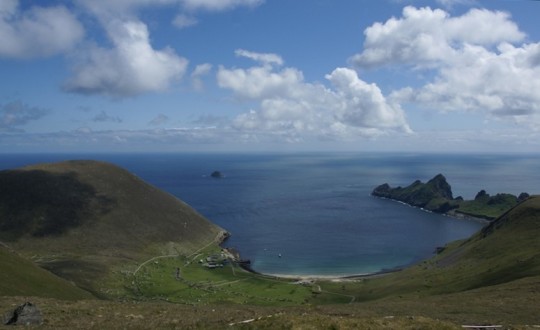
The remote Hebridean island archipelago is one of only two-dozen global locations with World Heritage Status for both natural and cultural significance.
The archipelago shares this honour with natural and cultural wonders such as the Historic Sanctuary of Machu Picchu in Peru and Mount Athos in Greece.
I'd love to visit, but it is a wee bit too expensive for me.
Edinburgh Old and New Towns.

Some people have asked me which part of Edinburgh is covered by this title, well the simple answer is all of it!
The capital is a city of many eras, and its World Heritage Site comprises both the old and new towns. The Auld Toon has preserved much of its medieval street plan and Reformation-era buildings along the wynds of the Royal Mile.
The (relatively) New town contrasts this perfectly with neoclassical and Georgian architecture in regimented order.
Antonine Wall.
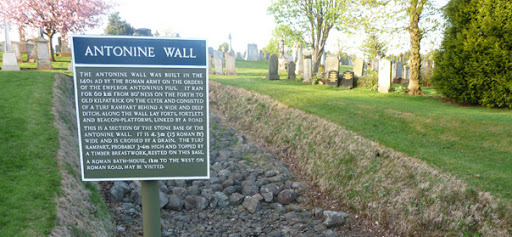
I've explored many parts of the wall. Constructed around 142 AD by the Romans, the Antonine Wall marked the north-west frontier of their empire. Stretching from the Firth of Forth and the Firth of Clyde, the Antonine Wall separated the civilised Romans from the wild Caledonians.
The Heart of Neolithic Orkney
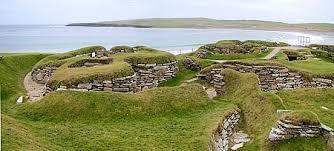
I've not visited The Northen Isles as yet, plans were in the early stages to go this year, but my friend ended up in hospita and is still recuprating, hopefully we can get something sorted when she becomes more able.
The Orkney mainland is synonymous with archaeology. It boasts the mysterious standing stones at the Ring of Brodgar and megaliths at Standing Stones of Stenness, as well as the 5,000-year-old settlement of Skara Brae and chambered cairn and passage grave of Maeshowe. Together these four sites form the heart of Neolithic Orkney, which was given World Heritage status in 1999.
The Forth Bridge

I remember as a bairn drawing and painting the bridge with a steam train going over it, but the train going over the "bumps!"
One of our most iconic and beloved bridges, the Forth Bridge was named a World Heritage Site in 2015 just after its 125th anniversary. The bridge was one of the most ambitious projects of its kind ever attempted at the time. When it opened it had the longest single cantilever bridge span in the world.
New Lanark
The last mill closed in the 1960s but a restoration programme saved the 18th-century village from falling into dilapidation.
It is an early example of utopian socialism in Scotland as well as a planned settlement – making New Lanark an important milestone in the historical development of urban planning. I have never visited, I must say I much prefer my ruined castles and abbeys.
115 notes
·
View notes
Text
Driven by a lust for riches, the 16th-century Spanish conquistadores set out for El Dorado, a mythical kingdom of gold and plenty. What they found instead was Peru, and plenty of potatoes. And that turned out to be the real treasure.
The men brought some potato plants back home with them and the tubers became lifesavers among the poor throughout Europe from Spain to Ireland to Germany to the shtetls of Russia.
At first, potatoes were met with mixed reviews in Europe. The Scots wouldn’t eat them because they weren’t among the foods mentioned in the Bible. Potatoes only became a staple in Ireland, some say, because Sir Walter Raleigh planted them on his estate there. The French originally thought potatoes were poisonous, mostly because cooks discarded the fat, lumpy part and served the leaves, which can be toxic.
It was only after French chemist Auguste Parmentier won a contest to discover a food that would reduce “the calamities of famine” that potatoes became a staple of the French diet. And everywhere else.
To stop massive starvation among the poor in 18th-century Prussia, King Frederick II forced the peasants to plant potatoes — with consequences for those who refused. (To this day, visitors to the king’s grave in Potsdam leave potatoes as a calling card.) Empress Catherine the Great did the same in Russia, for the same reason.
So, despite Europeans’ initial reluctance to accept this South American staple, it became clear to everyone that potatoes are incredibly valuable. They are easy to grow, and they thrive in all sorts of climates. More importantly, potatoes are filling and nutritious (rich in starch, potassium, copper and vitamins B6 and C). It’s a perfect food for the poor.
The potato certainly was a blessing for the poorest Ashkenazi Jews in Eastern Europe, who paid tribute to the tuber by composing a song:
Sunday potatoes
Monday potatoes
Tuesday and Wednesday potatoes
Thursday and Friday potatoes
But on Shabbes [Shabbat] something special
A potato kugel!
Sunday potatoes again
In every culture where the poor depended on potatoes, there’s a recipe for potato soup. France boasts the world-famous Potage Parmentier, made with leeks, in honor of the renowned scientist. In Ireland they serve a St. Patrick’s Day specialty — potato-onion soup garnished with bits of crispy bacon. Our Ashkenazi classic, kartoffelzup, is very similar to both the French and Irish versions.
In celebration of St. Patrick’s Day, I offer a rich, but easy, soup based on a combination of Irish potato soup and Ashkenazi kartoffelzup. You can garnish it with crispy kosher beef (or lamb) bacon if you substitute a non-dairy product for the cream. But I prefer the dairy version and use roasted shiitake mushrooms in place of the bacon because it has a similar smoky, meaty flavor. For sheer indulgence, serve the dairy version with a dollop of sour cream on top. Long live the potato.
12 notes
·
View notes
Text
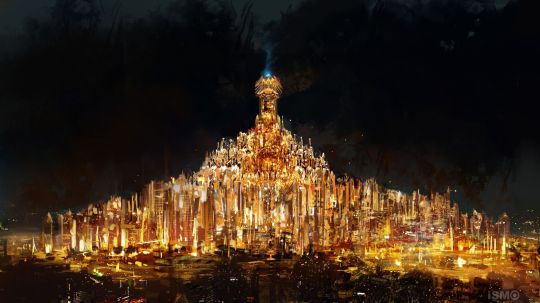
The Hunt: El Dorado, Fabled City of Gold, Remains Hidden in the Amazon
Centuries have seen countless explorers brave hardships to find the fabled city.
An ancient city of gold somewhere in South America is rumored to have been so fabulously opulent that it has become an expression for any place where people can amass great fortunes. But it has been so elusive that it has become synonymous, like the Holy Grail, with a prized object long sought but never found. Countless men have given their lives in the search for its riches as they ran out of supplies and food, were felled by disease, or encountered violent resistance along the way.
The goal of numerous explorers over centuries, from crews with wooden ships and horses to teams with drones and radar, El Dorado is a lost city, reportedly stretching over great distances in the Amazon rainforest and hidden from prying eyes by its remoteness and the warlike peoples in the forest around it. (The region got its name, in fact, from Spanish explorer Francisco Orellana, who compared the fighting women he encountered during his own search with the Amazons of ancient Greece.)
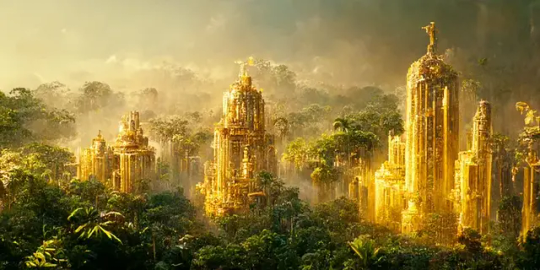
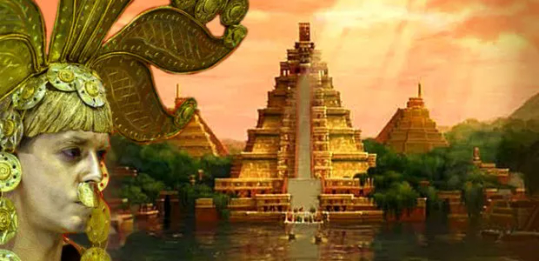
Tales of El Dorado, its name Spanish for “the golden,” began with the Muisca peoples’ perhaps-mythical account of a tribal chief who, in an initiation rite, coated himself in gold. He then went onto Lake Guatavita, near present-day Bogotá, threw a pile of gold objects into the water, and washed the gold off himself as his attendants also threw an abundance of gold objects into the lake. The 16th-century Spanish referred to him as the Golden Man or the Golden King.
“This is the ceremony that became the famous El Dorado, which has taken so many lives and fortunes,” according to a 1638 letter from writer Juan Rodríguez Freyle. That pile of loot was soon fused in the lore with an account of an entire city made of gold. Others posited that the city was called Manoa and was situated on the shores of a legendary Lake Parima, which has also never been found.
Supposedly one of the first to claim he visited it was the Spanish explorer Juan Martinez, who reported that the locals had brought him there blindfolded in 1531 and allowed him to witness it, and that he traveled an entire day through its streets before reaching the emperor’s palace.
When Francisco Pizarro conquered the gold-rich Inca civilization in Peru in 1532, Spaniards believed all the more firmly in the fabled El Dorado. Francisco de Orellana, a relative of Pizarro, unwittingly traveled the entire length of the Amazon, the world’s longest river, in his search for it.

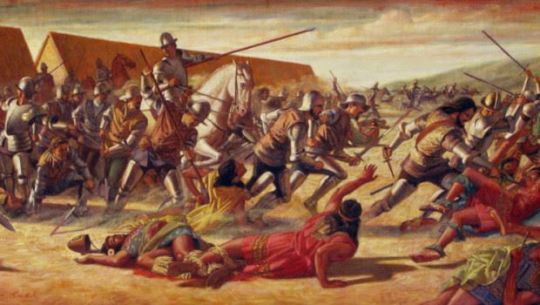
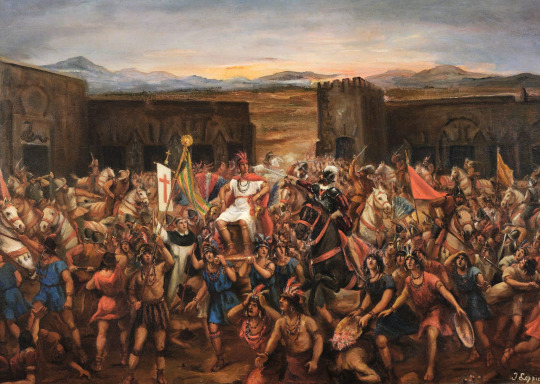
Some gold did turn up in a lake, seeming to justify the continued search. After he found Guatavita, a sacred lake in the Andes, in 1537, conquistador Gonzalo Jiménez de Quesada partly emptied it using a bucket chain. From its depths emerged a few thousand pesos of gold.
Bogotá entrepreneur Antonio de Sepúlveda, for his part, cut an enormous notch in the bank of the lake in 1580, removing a great deal of water before the notch collapsed and killed many of the workers. For his trouble, he uncovered three times as much gold as Quesada had, and sent it to King Philip II of Spain. Alexander von Humboldt, the 19th-century German explorer, would calculate that there could be as much as $300 million in gold in the lake.
English explorer Sir Walter Raleigh went looking for El Dorado in 1594, followed by the Spanish conquistadores, who scoured modern-day Colombia, Venezuela, Guyana and Brazil in the search. Less well-known expeditions continued over the 17th and 18th centuries, bodies piling up but ultimately turning up nothing.
In findings from a major scientific investigation, Von Humboldt would claim, ca. 1800, to have disproven the existence of the lake El Dorado is meant to have flanked. In the following decades, two other researchers came to the same conclusion.
But the legend did not die. The search was revived a century later, when an English company drained the lake almost entirely. Despite their efforts, they extracted artifacts worth only about £500, some of which went to the British Museum, some of which sold at Sotheby’s London. In 1965, the Colombian government designated the lake as off-limits to further attempts.
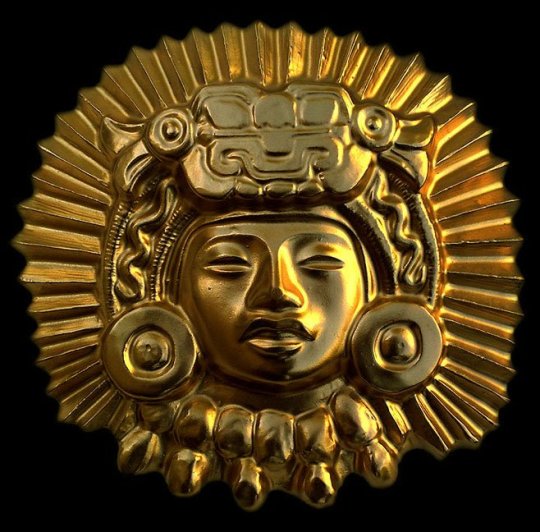
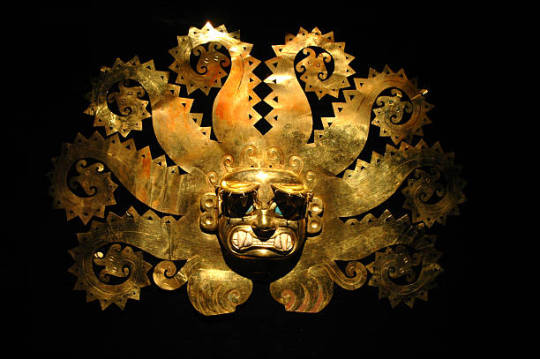
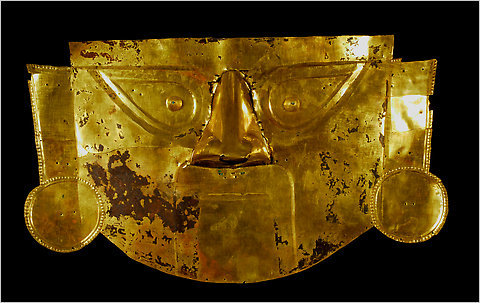
The quest continues with the help of modern technology. A team led by Venezuelan archaeologist-explorer Jose Miguel Perez-Gomez went looking, employing aerial and satellite remote sensing surveys obtained from NASA’s Shuttle Radar Topography Missions (SRTM), the Landsat Enhanced Thematic Mapper Plus (ETM+) instrument, and TanDEM-X synthetic aperture radar (SAR) sensors from the German Aeropsace Center’s Microwave and Radar Institute, according to a 2019 paper. Of all the unlikely results, their findings strongly resembled the outlines of a lake in a map drawn by none other than Sir Walter Raleigh.
The area is not without rich natural resources, so dreams of a city of gold can perhaps be forgiven. Illegal extraction operations are underway to this day, in fact, in what the Venezuelan government in 2016 designated the Orinoco Mining Arc, which covers 12 percent of the country’s territory and is rich not only in gold but also bauxite, coltan, and diamonds, possibly totaling some $2 trillion in value. You can literally see the modern gold mining from space: in 2021, an astronaut passing over eastern Peru in the International Space Station used a Nikon camera to snap a photo that reveals numerous gold prospecting pits.
Over the years, El Dorado has shown up in popular culture countless times, from a 1989 Neil Young record to video games, a board game, and the Cadillac Eldorado. So even as the city has remained stubbornly hidden over centuries, it is, in its way, all around us.
By Brian Boucher.
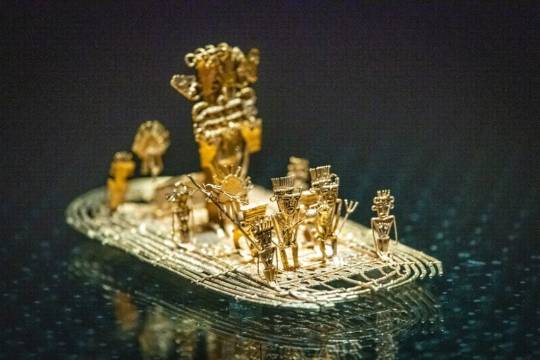
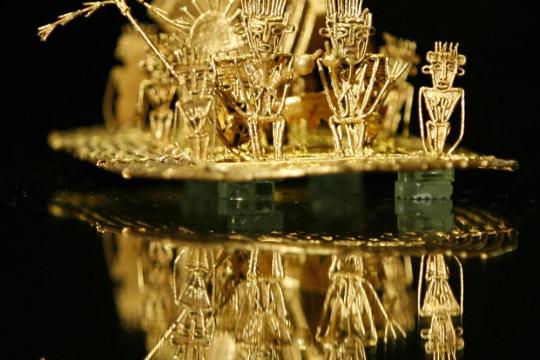
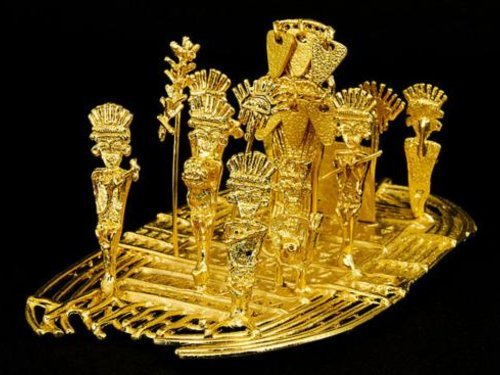
#The Hunt: El Dorado Fabled City of Gold Remains Hidden in the Amazon#El Dorado#the lost city#lost and found#Francisco Orellana#Juan Martinez#Francisco Pizarro#Gonzalo Jiménez de Quesada#gold#silver#ancient artifacts#archeology#archeolgst#history#history news#ancient history#ancient culture#ancient civilizations#inca empire#long post#long reads
22 notes
·
View notes
Text
CoD The Other Good Guys Bear! Edition
What if the rest of the good guys in call of duty were bears? Part 2 - see Part 1 for 141 as bears
More bear facts! Cause bears are truly the best! 🐻💯
Alejandro: Mexican Grizzly Bear*
Ursus arctos nelsoni - now Ursus arctos horribilis

*depiction of what a mexican grizzly bear may have looked like alive
A now extinct subspecies of the grizzly bear that once inhabited northern Mexico. Due to its predation on cattle farms, they were considered pests and hunted by farmers. By the 1960s there were less than 30 individuals remaining. In 1974 the last known individual was shot in Sonora.
It was smaller than grizzly bears from the United states and Canada, and its colouration was said to range from a pale yellow to greyish-white with a darker undertone, though some individuals were described to be darker and reddish brown.
Due to its silvery fur, it was called 'el olso plateado' (the silvery bear) in Spanish, though it's name in the Ópatas language (an indigenous Mexican people's) was 'pissini'.
Rudy: Spectacled Bear "Andean Bear"
Tremarctos ornatus

The last remaining short-faced bear, native to the Andes Mountains in northern and western South America. Though all bears are omnivores, the spectacled bear has a mostly herbivorous diet with only 5-7% of their diet being meat.
The bear is named after it's distinctive eye markings, though not all spectacled bears may have such markings. Individuals can have highly variable fur patterns making it relatively easy to distinguish from one another.
It's short face and broad snout is thought to be an adaptation to a carnivorous diet despite it's herbivorous preferences.
Paddington Bear is said to be a Spectacled Bear from Peru.
Farah: Asian Black Bear "Moon Bear"
Ursus thibetanus

A medium sized bear native to Asia and highly adapted to arboreal life. It can be found in parts of Korea, China, Japan, eastern Russia, the Himalayas, southeastern Iran and northern India. It is listed as vulnerable due to deforestation and poaching for its body parts (used in traditional medicines).
The name 'moon bear' is given due to its distinctive creamy white cresent fur patch, though in some individuals it is "V" shaped. It has a powerful upper body stronger than it's lower limbs and are known to be the most bipedal of bears.
It has a reputation for extreme aggression despite their reclusive nature and there have been documented reports of unprovoked attacks. They are said to be more aggressive than the Eurasian Brown Bears that may cohabit the same areas and the American Black Bear.
Alex: American Black Bear
Ursus americanus
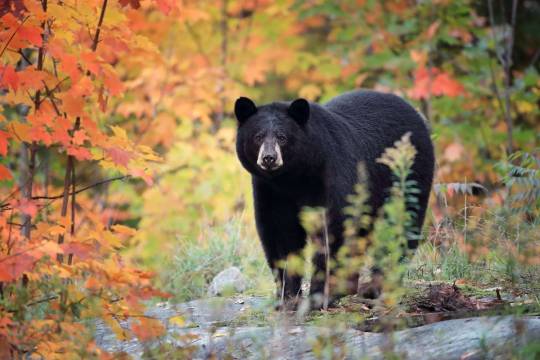
Alongside the Brown Bear, it is one of the only Bear species not threatened with extinction.
Despite living in North America, it is more closely related to the Asian Black Bear and Sun Bear than Grizzly Bears (North American Brown Bears) and Polar Bears. It's ancestors are thought to have split off from the Sun Bear.
Black Bears are distinguished from Grizzly Bears who may cohabit the same area, with their longer tall ears, straight face profile, shorter claws and lack of distinctive hump.
Teddy bears, Winnie-the-Pooh, and Smokey Bear are all inspired by the American Black Bear.
Nikolai: Polar Bear
Ursus maritimus
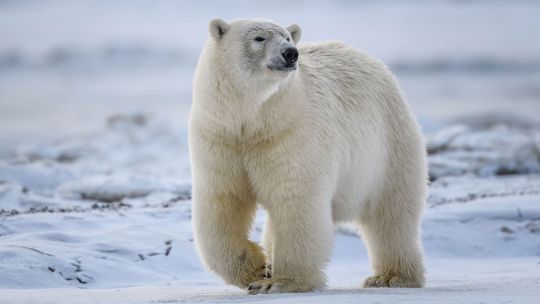
A large bear native to the Arctic. It is closely related to the Brown Bear and can hybridise with them though this is rare and not often seen. (See Grolar Bears)
They are the most carnivorous of all bear species (hypercarnivores), specialising in hunting seals through ambush attacks. Polar Bears are usually solitary but can be found in groups on land. They can form stable 'alliances' based on dominance hierarchies outside of breeding seasons with the largest males at the top.
It's common name was given in 1771, and was previously referred to as 'white bear', 'ice bear', 'sea bear', 'Greenland bear' in 13th - 18th century Europe. The Netsilik cultures (Inuit) named it 'nanook' and have several additional different names for them depending on sex and age of the polar bear.
Laswell: Kodiak Bear "Kodiak/Alaskan Brown Bear"
Ursus arctos middendorffi

Named after it's habitation of the Kodiak Archipelago in southwest Alaska, the Kodiak bear is the largest subspecies of Brown Bear, with some individuals comparable to the Polar Bear in size.
An island bear, it is 1.5-2x larger than it's mainland cousins the grizzly bear, though physically and physiologically, the two bears are very similar.
Due to its tendancy to feed in dense groups, it has thought to have developed more complex social behaviours (in comparison to mainland grizzly bears) to minimise infighting/fatalities via both verbal/ body posturing and social structures.
+
All info taken from wiki. Please let me know if ther any mistakes.
#cod mwii#cod mw2#call of duty modern warfare#cod mwiii#alejandro vargas#rudy parra#rudy cod#farah karim#farah cod#alex cod#nikolai cod#kate laswell#laswell cod#bears#bear facts
33 notes
·
View notes
Text
Had a pleasant visit from @blogofex the past few days. We visited the Bygdøy peninsula with its several museums and got to see:
The Fram Museum of Polar Exploration, centered on the ship Fram ("Forth!" or "Forward!") and the several explorers who took it most of the way to both the North Pole and the South Pole during the Heroic Age.
"Nå må de skynde dem, ellers blir det for sent" (Now thou must hurry or else it will be too late) -Hjalmar Johansen as he was being attacked by a polar bear and called out to Fridtjof Nansen to get the gun faster.
"Nå tror jeg vi kan være dus med hverandre" (Now I think we can use the informal 'you' with each other) -Nansen to Johansen, several months later on that North Pole trip.
The Kon-Tiki Museum of Thor Heyerdahl's voyages, a man who was probably wrong about his theory of people rafting from Egypt to South America to Hawaii 3000 years ago.
Still, he got a lot of respect for testing part of his theory by building a raft at 3000 year old tech level and setting sail westward from Peru, with no previous experience but a lot of people telling him "You are going to die if you do this". He lived.
The Norwegian Culture and History Museum, somewhat vaguely named, with a wide collection of exhibits showing what Norway was "like" in the past, from looms and stables to plaster ceilings and priestly chasubles.
Also a stave church, originally from the 13th century, refurbished 18th century, with fancy wood panels.

Best wishes in next country, tourist man!
13 notes
·
View notes
Text

La Virgen de la Soledad
The Virgin of Solitude
Oil on canvas
Unknown artist of the Cusco School Dated early 18th Century
Private collection
Please donate if you can: https://www.gofundme.com/f/6nbb36-save-us-from-death-and-leave-gaza
#Baroque#Baroque Art#Baroque Painting#Painting#Cusco School#Cuzco School#Escuela Cuzqueña#Mater Dolorosa#Our Lady of Sorrows#Virgin Mary#Catholic Art#Sacred Art#Peru#18th Century#Peruvian Art#18th Century Art#18th Century Peru#Peruvian Painting
7 notes
·
View notes
Text
so a lot of the dna of fallout is built on a canticle for leibowitz, which was itself drawing on the loss of technological learning in europe following the collapse of the western roman empire… but that loss was geographic, not universal. classical knowledge was retained and built upon for centuries in the islamic world; the renaissance kicked off in europe because a wealth of arabic translations and commentaries on classical writers came into europe through muslim spain and the expansion and retraction of the ottoman empire. fallout has moved fairly far away from the idea of an intellectual dark age, inasmuch as it ever really had one, but it would be interesting for NCR traders or brotherhood scouts to get far enough towards South America that they encounter the thriving and advanced civilizations of venezuela, colombia, or peru. they had some bad years following the great war, sure, but they weren't primary targets the way the US was, so all the prewar technology is still there, iterated on with 200 years of further experimentation and adaptation to a world lacking in the easy extractive resources that the former great powers relied on. where the brotherhood of steel's pretensions to being keepers of knowledge isn't just self-aggrandizement, but positively quaint. power armor is suddenly as antiquated as plate mail would be to an 18th century musketeer.
8 notes
·
View notes
Photo

Retrato dell Emo Sr D.n Joseph Antonio Manzo de Velasco, Conde de Superunda (detail)
by Cristóbal Lozano (Peruvian, c. 1705 - c. 1776) oil on canvas, signed and dated 1758
Catedral Metropolitana de San Juan, Ciudad de los Reyes
#720704782602567680/J8cCG3v1#Cristóbal Lozano#Fashion#José Antonio Manso de Velasco#Conde de Superunda#Monarquía Hispánica#Spanish Empire#Viceroyalty of Peru#18th century#1758#Baroque#Los Reyes Cathedral#Spanish nobility#Peru#Lima#portraits#oil on canvas#paintings
2 notes
·
View notes
Text
I really need to read more about history and how life actually was for regular people in different places and time periods because whenever I hear somebody talking about working multiple jobs and barely being able to support themselves it makes me think of that enslaved man in 18th century Viceroyalty of Peru who killed himself because he was working multiple jobs and couldn’t afford to both support himself and his family and pay the amount that the one who enslaved him demanded from him (an accepted practice at the time—at least for anyone who wasn’t an abolitionist). I can understand why the comparison came to mind but surely there are examples closer than that. I suspect, though, that such situations have been rather common, or more common than uncommon, to put it one way.
I spend too much time on the Computer (or more terrible than that, the Phone), so I understand that the English-dominated discussion of current trends in Society, or the Economy, etc, overrepresents the grievances of citizens of countries that have been very prosperous in the past few decades. Those are parts of the world, but they’re not “the” world!
(All of this to say I should read more books and less of what’s on the Computer.)
18 notes
·
View notes
Text
Publications of the New World
The James Smith Noel Collection has closed out another exciting exhibit, this time the topic was the New World of the Americas as experienced by Europe and other explorers. The exhibit: Exploration of the New World features the culture and intriguing history of Central and South America as it was experienced in the resources produced in the 17th, 18th, and 19th centuries. We welcomed visitors to the mysterious, ancient rituals of the Pre-Columbian Mayans, the Aztecs of Mexico, and the Incas of Peru. We also showcased the advancements in architecture, science, and community development while marveling at the natural beauty of the regions.


One of the cases displayed a fascinating book which was originally published in Spanish and later translated into English. The edition house in the Noel Collection was published in 1688 of The royal commentaries of Peru, : in two parts. The first part Treating the Original of their Incas or Kings: Of their Idolatry … by Garcilaso de la Vega. Vega wrote a pivotal account of Incan history. Vega has a unique personal connection to the Incan world being a descendant of royal Incan lineage. He was half Spanish and Incan, his father being Spanish, and he chronicled Incan history, culture, and destruction as a result of the Spanish conquest. We featured a portion of text that discussed the minerals, precious metals, and natural resources found in Peru, such as, gold, silver, and mercury or quicksilver.

Vega was born as Gómez Suárez de Figueroa in April of 1539, and became known as El Inca. He ventured to Spain when he was 21 where he obtained an informal education and remained until his death in April of 1616. His father died in 1559 and Vega relocated to Spain two years later to seek acknowledgement as the natural son of the Spanish conquistador. His paternal uncle became his protector. While he primarily wrote on the Incan civilization, Spanish conquest, and an account of De Soto’s exploration of Florida.
Gómez Suárez de Figueroa was born in Cuzco, Peru; his father is recorded as being Sabastian Garcilaso de la Vega y Vargas, a Spanish captain, and his mother was Palla Chimpu Ocllo. When his mother was baptized after the fall of Cuzo and renamed Isabel Suarez Chimpu Ocllo, she was descended from Inca nobility, the daughter of Tupac Huallap and granddaughter of Tupac Yupanqui. Vega’s parents were not married in the Catholic church, resulting in his birth being considered illegitimate and he was given his mother’s surname. Vega was a child when his father left and married a younger Spanish noblewoman. His mother married and had two daughters. His first language was Quechua but learned Spanish as a child.


After moving to Spain, he received a European education and the works he produced was considered to have great literary value. He traveled to Montilla and met his father’s brother, Alonso de Vargas, who took him as his protector to help Vega make his way. He traveled to Madrid and petitioned the crown for acknowledgement. He was allowed the name of Garcilaso de la Vega, or "El Inca" or "Inca Garcilaso de la Vega" due to his mixed heritage. He had first-hand experience of the daily-life of the Inca life which heavily influenced his writings. His education allowed him to accurately describe the political system, labor force, and social life of the Incan empire.

Vega, Garcilaso de la (1688) The royal commentaries of Peru, : in two parts. The first part Treating the Original of their Incas or Kings: Of their Idolatry … London: Printed by Miles Flesher … https://bit.ly/3UxrtdH
Exhibit link: https://bit.ly/3y7k657
9 notes
·
View notes